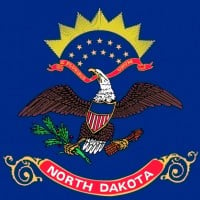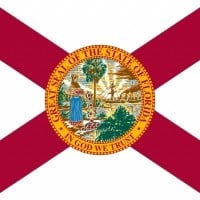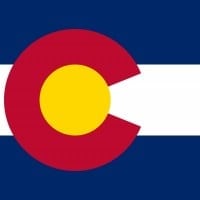Top 10 Most Self-Sufficient States In the United States
What state do you think could keep themself together? Could it be Alaska, California, or any state? California is a state in the Southwestern United States. With 39.6 million residents across a total area of about 163,696 square miles (423,970 square kilometers), California is the most populous U.S. state and the third-largest by area. The state capital is Sacramento, and the largest city is Los Angeles... read more
California is a state in the Southwestern United States. With 39.6 million residents across a total area of about 163,696 square miles (423,970 square kilometers), California is the most populous U.S. state and the third-largest by area. The state capital is Sacramento, and the largest city is Los Angeles... read more California is a great state and the most progressive, hence the most prosperous. As much as people complain about Democrats and high taxes, it's to SUPPORT the progressive mantra to keep growing and flourishing. Anyone who complains about our politics elsewhere and internally, participate and practice your civic duties if your resident. If you're not, you're just envious. If you don't like it here, then leave to Texas are wherever you deem more free. I'm sure someone is waiting in line to take up your space from somewhere else.
 New York is a state located in the Mid-Atlantic Region. New York was one of the original thirteen colonies that formed the United States. With an estimated 19.54 million residents in 2018, it is the fourth most populous state. In order to distinguish the state from the city with the same name, it is... read more
New York is a state located in the Mid-Atlantic Region. New York was one of the original thirteen colonies that formed the United States. With an estimated 19.54 million residents in 2018, it is the fourth most populous state. In order to distinguish the state from the city with the same name, it is... read more Home to one of the most developed cities in the world, it would be a prosperous place if the crisis of the US splitting were to happen.

California and the West couldn't last a year without the water provided by the Great Lakes. Michigan has everything it needs in theory. It has plenty of fresh water. It has plenty of farms with plenty of variety (second only to California, but again, how is California going to water those crops without Michigan? ). It has the now-profitable Big Three car companies. It has the untapped goldmine of resources in the Upper Peninsula. Coal, lumber, oil, you name it is up in the UP. It has a strong tourism economy (so much so that they have a law saying public schools must start after Labor Day to encourage tourism). The only state that can compete with Michigan is Texas because they have lots of military bases and oil, whereas Michigan only has enough of those for itself. But again, Texas doesn't strike me as overflowing with fresh water nor farms.
 Texas is a state in the Southern USA. It is the second largest by area and population. Its largest city is Houston.
Texas is a state in the Southern USA. It is the second largest by area and population. Its largest city is Houston. Here's The deal, Texas is the second largest state, with terrain which varies widely, so, there is a broad production of multiple different goods. Texas produces the most Oil in the US, and even at times outproduces Saudi Arabia and other middle east places known for Oil.
Texas has a state militia that could easily hold its own against other world superpowers, at least for a time. Texas also has the most impressive Law Enforcement branch (Texas Rangers) known to man.
Texas is a hot-spot for businesses, and innovation, partially due to low taxes, but also partially due to Texans generally being able to be consumers to these businesses. Texas is a place of success, and though in the dense city populations, it does tend to have a few Democrats, the majority of Texans are hard working citizens, not only loyal to Texas, but extremely proud of it.
Finally, I would like to mention that Texas was actually once its own Country, whereas Every other state does not have that background.
 Idaho is a state in the northwestern region of the United States. Idaho is the 14th largest, the 39th most populous, and the 7th least densely populated of the 50 United States.
Idaho is a state in the northwestern region of the United States. Idaho is the 14th largest, the 39th most populous, and the 7th least densely populated of the 50 United States. Large of amount of renewable energy.
Gas pipeline
Large agricultural production for population size
Food production plants
Large dairy production
Cattle-swine-poultry operations and processing plants.
Idaho has both mineral and food production as well as a tech industry and the potential for a manufacturing industry. With 4th generation nuclear technology, we could be fully self powered.
Idaho has a low population it would be easy for them to grow enough food to survive
 Alaska is a U.S. state situated in the northwest extremity of the Americas. The Canadian administrative divisions of British Columbia and Yukon border the state to the east; it has a maritime border with Russia to the west across the Bering Strait.
Alaska is a U.S. state situated in the northwest extremity of the Americas. The Canadian administrative divisions of British Columbia and Yukon border the state to the east; it has a maritime border with Russia to the west across the Bering Strait. Alaska is resource-rich, and its small population could lead to instant money. But, they shouldn't burn down all the glaciers.
 Ohio is a state in the midwestern region of the United States. Ohio is the 34th largest by area, the 7th most populous, and the 10th most densely populated of the 50 United States.
Ohio is a state in the midwestern region of the United States. Ohio is the 34th largest by area, the 7th most populous, and the 10th most densely populated of the 50 United States. Ohio has more major cities than any other state in the nation. Outside those cities, however, is vast sprawls of either woodland or fertile farmland. We also have well-established industrial and military centres (even after the rust belt collapse), as well as some of the largest freshwater ports and Marinas in the world. Although the large population could be a challenge, the huge amount of farmland would easily be able to feed the entire population with a surplus. Go Bucks!
I think that it's because they won the national championship. My state.
 North Dakota is the 39th state of the United States, having been admitted to the union on November 2, 1889.
North Dakota is the 39th state of the United States, having been admitted to the union on November 2, 1889. I think North Dakota could survive but what about the savages? And North Dakota has tons of peep squeaks that run a round and mine oil...
Oil has been discovered there, and it's being mined as we speak.
 Washington is a state in the Pacific Northwest region of the United States located north of Oregon, west of Idaho, and south of the Canadian province of British Columbia on the coast of the Pacific Ocean. It is the only state named after a president.
Washington is a state in the Pacific Northwest region of the United States located north of Oregon, west of Idaho, and south of the Canadian province of British Columbia on the coast of the Pacific Ocean. It is the only state named after a president. Seattle, as well as a high amount of food growth.
 Wisconsin is a U.S. state located in the north-central United States, in the Midwest and Great Lakes regions.
Wisconsin is a U.S. state located in the north-central United States, in the Midwest and Great Lakes regions. Is it possible cheese exports could keep the state alive?
 Florida is a state located in the southeastern region of the United States. Florida is the southeasternmost U.S. state, with the Atlantic on one side and the Gulf of Mexico on the other.
Florida is a state located in the southeastern region of the United States. Florida is the southeasternmost U.S. state, with the Atlantic on one side and the Gulf of Mexico on the other. Without a doubt Florida would definitely be one of the most self sufficient states. Floridas agricultural is thriving year round because of the temperate climate along with the ocean to provide food. Fuel is not a problem in Florida because many cities are nuclear powered and the potential of rich untapped oil resources offshore. Lots of timber, manpower, tourism, solar energy the list goes on...
Florida has the potential to produce more produce than that of california at a cheaper cost since it wouldn't need to run as much irrigation and we can grow year round. As for oil we can drill for it off shore and being nearly surrounded by water means that there is a booming fishing industry. florida is one of the leaders in tourism in the entire country and it's citizens take their 2nd amendment seriously so it would definitely be able to defend itself. the only problem I see would be a lack of mineral resources such as iron and coal.

Vermont has a small population, yet they are extremely smart.
 Illinois is a state in the midwestern region of the United States. It is the 5th most populous state and 25th largest state in terms of land area, and is often noted as a microcosm of the entire country.
Illinois is a state in the midwestern region of the United States. It is the 5th most populous state and 25th largest state in terms of land area, and is often noted as a microcosm of the entire country. Illinois has the 5th largest population in America, the 5th largest economy in America, and the 3rd largest city in America. They have the Farming capability of being their own nation. They are also on Lake Michigan, which gives them fresh water.
 Colorado is a state in the United States encompassing most of the Southern Rocky Mountains as well as the northeastern portion of the Colorado Plateau and the western edge of the Great Plains.
Colorado is a state in the United States encompassing most of the Southern Rocky Mountains as well as the northeastern portion of the Colorado Plateau and the western edge of the Great Plains. Agriculture, mining, forestry, snowmelt, only severe droughts put self-sufficiency into doubt.
We have the beef, we have the wheat, we have the dams and aquifers, we have the weed, we have NORAD and all of it's toys. 'Nough said
Colorado has a smaller population they could probably move into the mountains and live up there with there cattle and by moving there military up there they could survive

Louisiana has its foot in almost every industry from tech to agriculture, it's resource rich, and its population is just right in regards to self sustainability; that being, its population isn't too large to be reliant on others for resources and isn't too small to lack in production of products. It's also the home to 3 of the USA's largest ports, as it controls the mouth of the nations longest and perhaps most valuable river.
In regards to California and Texas they would be able to sustain themselves well for the beginning of the term; however, both states are prone to droughts and water shortages which could, in the long term, lead to famine as the states try to satisfy the needs of their large populations.
 South Carolina is a state in the southeastern region of the United States. The state is bordered to the north by North Carolina, to the south and west by Georgia across the Savannah River, and to the east by the Atlantic Ocean.
South Carolina is a state in the southeastern region of the United States. The state is bordered to the north by North Carolina, to the south and west by Georgia across the Savannah River, and to the east by the Atlantic Ocean.
 Pennsylvania, officially the Commonwealth of Pennsylvania, is a state located in the northern and Mid-Atlantic regions of the United States.
Pennsylvania, officially the Commonwealth of Pennsylvania, is a state located in the northern and Mid-Atlantic regions of the United States. Needs to be above Mississippi.
 Minnesota is a state in the Midwestern United States. Minnesota was admitted as the 32nd state on May 11, 1858, created from the eastern half of the Minnesota Territory.
Minnesota is a state in the Midwestern United States. Minnesota was admitted as the 32nd state on May 11, 1858, created from the eastern half of the Minnesota Territory. Been doing pretty damn good the last several years. Economy's alright and were slowly getting more recognition. Besides, if we can handle those rough winters, we're probably doing well.
 Tennessee is a state located in the southeastern United States. Tennessee is the 36th largest and the 17th most populous of the 50 United States.
Tennessee is a state located in the southeastern United States. Tennessee is the 36th largest and the 17th most populous of the 50 United States. I think the state could stay afloat but not thrive based off its tobacco and alcoholic sales and or trade. Tourism would play a key role in the states sunk or swim economy as well.
 Arizona is a U.S. state in the southwestern region of the United States. It is also part of the Western and the Mountain states.
Arizona is a U.S. state in the southwestern region of the United States. It is also part of the Western and the Mountain states. Arizona has plenty of food (one of the largest veggie producers), is a large copper producer, has a large retirement community. It also grows a significant amount of corn and cotton. It is very capable of being self sufficient. It also has it share of the Colorado river, a vital resource for all Southwestern states.
 Missouri is a state located in the Midwestern United States. It is the 21st most extensive, and the 18th most populous of the fifty states.
Missouri is a state located in the Midwestern United States. It is the 21st most extensive, and the 18th most populous of the fifty states. If the states were to separate, Missouri would do just fine. We have an extensive agriculture base, and enough access to the raw materials for our industry to prosper. As for oil...we'll steal it from Oklahoma and Arkansas.
 Maine is located in the New England region of the northeastern United States. Known for its rugged coastline, it is the easternmost state in the contiguous U.S. Its capital is Augusta, while its largest city is Portland. Maine is famous for its maritime history, as well as its seafood cuisine, particularly... read more
Maine is located in the New England region of the northeastern United States. Known for its rugged coastline, it is the easternmost state in the contiguous U.S. Its capital is Augusta, while its largest city is Portland. Maine is famous for its maritime history, as well as its seafood cuisine, particularly... read more
 Iowa is a U.S. state in the Midwestern United States, bordered by the Mississippi River on the east and the Missouri River and the Big Sioux River on the west.
Iowa is a strong Republican state with Constitutional Carry. Masks have never been mandatory and Iowa was never locked down.
Iowa is a U.S. state in the Midwestern United States, bordered by the Mississippi River on the east and the Missouri River and the Big Sioux River on the west.
Iowa is a strong Republican state with Constitutional Carry. Masks have never been mandatory and Iowa was never locked down.
 Georgia is a state located in the southeastern United States. It was established in 1732, the last of the original Thirteen Colonies.
Georgia is a state located in the southeastern United States. It was established in 1732, the last of the original Thirteen Colonies. With lots of farmland, transportation infrastructure and access to international trade, Georgia would have a fighting chance to make it on the outside.